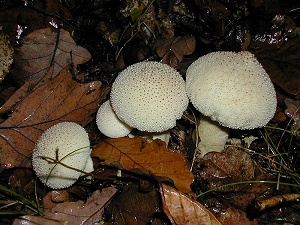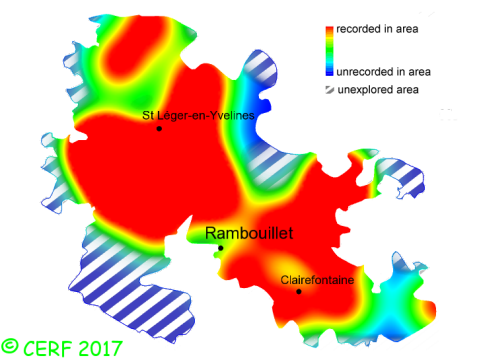| Lycoperdon perlatum Pers.:Pers. |
|
|
|
|
|
|
The fruiting body is spherical or pear-shaped, with conical spines that may be washed away, leaving a polygonal trace, some of them short, the others larger, and a slight umbo at the top, whitish then grey-brown, with a rather long stem (two thirds of the total height) but not differentiated from the fertile head, tapering at the base. The flesh is white, firm, becoming soft, olive-brown when mature (fertile head, eventually dissolving to powder) or ochraceous (sterile part forming the stem); its taste is faint, non disctinctive; the odour is non disctinctive or faint, later unpleasant. The fertile surface is internal: the spores are released as dust when mature, from a pore at the top. The spore print is olive-brown.It grows on the ground, trooping in broad-leaved and coniferous woods, sometimes in parks. The fruiting period takes place from July to December.
Chemical tests : none. Distinctive features : round head and stem not easily distinguished; white stem and head, covered with conical spines that may be washed away; spores are blown out as powder when mature from a round pore at the top of the head; no distinct internal membrane separating the fertile head from the stem; the most common of all Puffballs Lycoperdon perlatum is frequent and very widely present in the forest of Rambouillet, and is frequent, more generally speaking . | ||
|
page updated on 14/01/18

